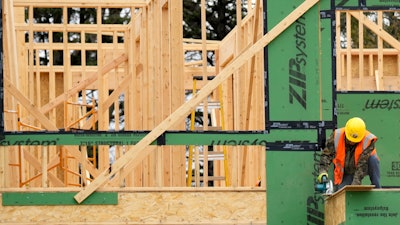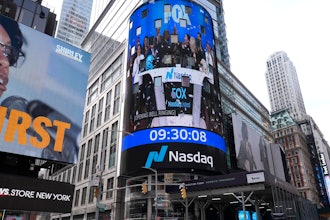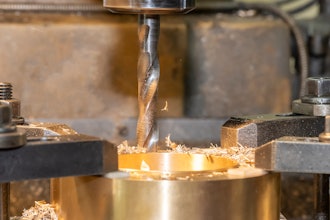
WASHINGTON (AP) — Pay and benefits for America's workers grew more quickly in the first three months of this year, a trend that could contribute to higher inflation and raise concerns about the future path of price increases at the Federal Reserve.
Compensation as measured by the government's Employment Cost Index rose 1.2% in the January-March quarter, up from a 0.9% increase in the previous quarter, the Labor Department said Tuesday. Compared with the same quarter a year earlier, compensation growth was 4.2%, the same as the previous quarter.
The increase in wages and benefits is good for employees, to be sure, but could add to concerns at the Fed that inflation may remain too high in the coming months. The Fed is expected to keep its key short-term rate unchanged after its latest policy meeting concludes Wednesday.
Fed Chair Jerome Powell and other officials have recently backed away from signaling that the Fed will necessarily cut rates this year, after several months of higher-than-expected inflation readings. Big price increases for rents, car insurance and health care have kept inflation stubbornly above the Fed's 2% inflation target.
As a result, Fed officials have swung from suggesting they could cut rates as many as three times this year to emphasizing that they will wait until there is evidence that inflation is steadily declining toward 2% before making any moves.
"The persistence of wage growth is another reason for the Fed to take its time on rate cuts," Paul Ashworth, an economist at Capital Economics, a consulting firm, wrote in a research note.
The pace of worker compensation plays a big role in businesses' labor costs. When pay accelerates especially fast, it increases the labor costs of companies, which often respond by raising their prices. This cycle can perpetuate inflation.
However, companies can offset the cost of higher pay and benefits by becoming more efficient, or productive. In the past three quarters, producivity has increased at a healthy pace, which, if sustained, would enable companies to pay workers more without necessarily having to raise prices.
The first quarter's increase in compensation growth was driven by a big rise in benefits, which jumped 1.1%, up from 0.7% in last year's fourth quarter. Wages and benefits at the state and local government level also drove the overall increase, rising 1.3% in the first quarter from 1% in the fourth, while private-sector compensation growth rose by a smaller amount, to 1.1% from 0.9%.






















